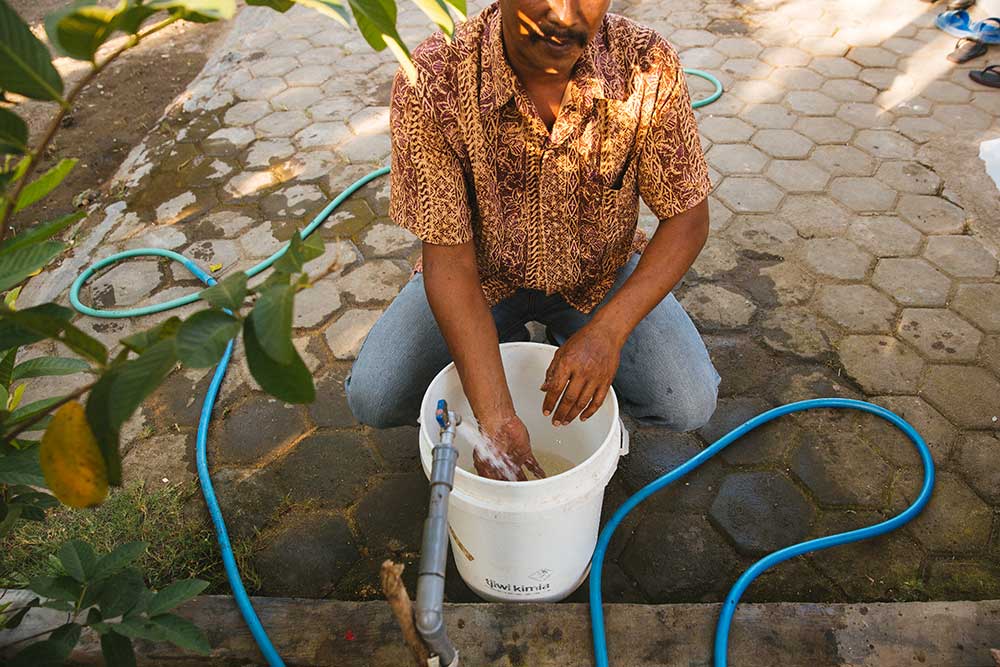| INTERNAL EVIDENCE | EXTERNAL EVIDENCE | |
|---|---|---|
Resilience Improved water supply and sanitation are more resilient to climate change impacts | 
| 
|
Multiple sources Access to multiple water and sanitation sources reduces household vulnerability to climate change impacts | 
| 
|
Strengthened actors Households, service providers and governments all play roles in building the resilience of water supply and sanitation to climate change impacts | 
| 
|
Lower emissions and environmental impact Improved water supply and sanitation generate lower greenhouse gas emissions and less harm to the local environment | 
| 
|
The world is rapidly changing as human-caused warming accelerates, raising grave challenges for people living in poverty and for universal access to clean water and sanitation. The impacts are primarily felt through the water cycle, whether as shocks like flash flooding and storm surges, or as slow-building droughts, water scarcity, and bad water quality. These impacts are the local face of a global crisis, and the reasons why affordable finance is key: it enables local solutions that people can adapt quickly to their needs. Although evidence for the impacts of climate change on water and sanitation access, and vice versa, is nascent, our data offers some important insights.
Water and sanitation microlenders can see climate change in real time
The climate is changing, with many regions already warming more than 1.5°C. The severe direct and indirect impacts on water supply and sanitation include damage to infrastructure, lower water availability and worse quality. We risk a massive setback in progress toward Sustainable Development Goal 6 – clean water and sanitation for all.
Our WaterCredit partners report a worrying range of impacts that they and their customers are experiencing. These naturally vary from country to country, and for financial institutions the effects can hurt both their business operations and their clients, adding urgent momentum to their lending.
In 2021, we conducted a survey on the effects of climate change with our financial institution partners in 11 countries. We learned that 62% anticipate increased demand for water loans due to droughts or other climate change-related events, and 39% expect higher demand for water supply and sanitation improvements that may better survive such events. On the other hand, 19% foresee a decrease in demand for loans due to borrowers’ worries about future infrastructure damage.
Only 7% of our partners say they do not think climate change will affect their business operations at all. Most report that they have made changes to their water loans or products to better respond to the impacts of climate change, but they also require various forms of support to address the threats they face.
Households are investing in water supply solutions that are more resilient to climate extremes
We have not systematically collected data on the resilience to climate change impacts of water supply improvements financed through WaterCredit programs. Nevertheless, our top-level data from Bangladesh, Cambodia, India, Indonesia and the Philippines highlight how these water supply improvements are generally more resilient to climate change impacts than loan recipients’ previous primary water sources.
We can see this by looking at our data alongside the established evidence on the vulnerability of different source types. In broad terms, many households have used affordable financing to shift away from unimproved services such as unprotected wells and open lakes and streams, or less sophisticated facilities such as hand-dug wells with hand pumps, which are associated with very low levels of climate resilience.
Water loan recipients know these vulnerabilities well: 33% report that their choices of improvements are directly influenced by climate change impacts they have experienced. Many upgrade to household connections with piped water supply services, which typically provide higher service levels – although these services can still be vulnerable to floods and droughts. Boreholes, another popular improvement, are often the most resilient water supply infrastructure in the face of climate change.
Households are investing in more climate-resilient sanitation
Among households who take out sanitation loans, 18% say that their choices of improvements are influenced by their experiences of climate change. Fortunately, the sanitation solutions financed through WaterCredit programs are more climate-resilient than loan recipients’ old services. Affordable finance has enabled a considerable shift away from open defecation and shared facilities, chiefly toward toilets with septic tanks and different types of pit latrines.
The rapid move away from open defecation, in particular, removes the health vulnerabilities that arise during high-intensity rainfall events, when waste and disease spreads freely through the local environment. Septic tanks and pit latrines are less vulnerable to these risks – and they are even less vulnerable to service interruption than toilets connected to sewers, during both floods and dry spells.

